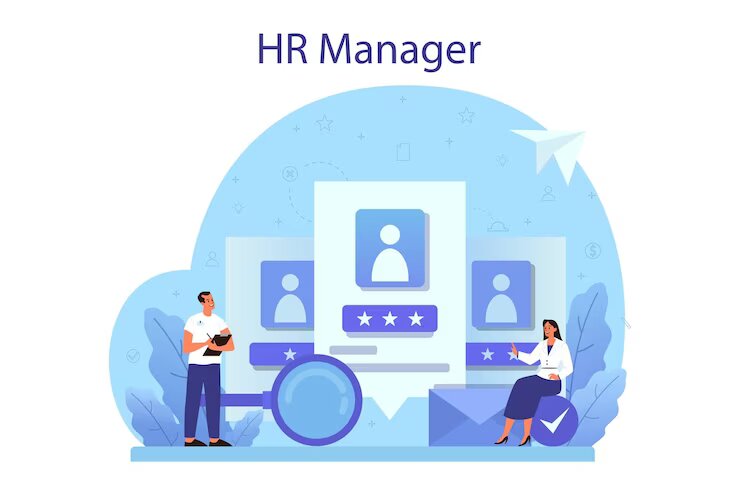In the ever-evolving landscape of modern business, achieving operational excellence and staying ahead of the competition requires more than individual departmental efficiency. Collaboration and seamless communication between different functions within an organization has become vital for achieving holistic success. The rise of Human Resource Management Systems (HRMS) has transformed the way businesses manage their workforce, and today, HRMS has evolved into an integrated ecosystem that connects various business functions. In this comprehensive blog post, we will delve into the significance of an HRMS integration ecosystem and explore how it enables the seamless connection between HR and other key departments, thereby enhancing overall efficiency, productivity, and strategic decision-making.
The Evolution of HRMS: From Silos to Integration
Traditionally, HRMS platforms were developed as standalone tools designed primarily to handle HR-related tasks such as payroll processing, benefits administration, and employee records management. However, as organizations began to recognize the need for a more cohesive and collaborative approach to their operations, the concept of integrating HRMS with other business functions gained momentum.
The Benefits of HRMS Integration Ecosystem
- Efficient Data Flow: One of the primary advantages of an integrated HRMS ecosystem is the efficient flow of data across various departments. Employee information, encompassing details like performance reviews, training records, certifications, and more, can be accessed seamlessly by relevant departments without the need for redundant data entry.
- Streamlined Processes: Integration of HRMS with other functions leads to streamlined and optimized processes that involve multiple departments. For instance, when an employee’s performance appraisal is directly linked to their compensation and benefits, integration eliminates the need for duplicate data entry and accelerates the decision-making process.
- Real-time Insights: An integrated HRMS solution provides access to real-time insights and analytics, enabling informed decision-making. By correlating HR data with sales performance metrics, organizations can identify patterns and trends that highlight the impact of employee engagement on revenue growth.
Key Integration Areas
- Finance and Payroll: Integrating HRMS with financial systems simplifies the complex process of payroll processing. It automates tax deductions, ensures accurate salary calculations, and facilitates timely disbursement, contributing to increased accuracy and reduced administrative burden.
- Learning and Development: Connecting HRMS with learning platforms enhances training and skill development efforts. The integration allows organizations to track employees’ progress, update training records automatically, and create a seamless learning experience.
- Performance Management: Integrating HRMS with performance management systems facilitates ongoing feedback and continuous performance tracking. This integration contributes to fair evaluations, objective goal-setting, and improved alignment with strategic objectives.
- Recruitment and Onboarding: Integration with recruitment platforms transforms the recruitment process into a cohesive journey. It enables a smooth transition from candidate selection to onboarding, resulting in a positive and consistent candidate experience.
Challenges and Considerations
While the advantages of an HRMS integration ecosystem are substantial, navigating the integration journey comes with its challenges:
- Data Security: Ensuring data security during integration is paramount. Robust encryption, role-based access controls, and stringent data protection measures are essential to safeguard sensitive information.
- System Compatibility: Different departments may utilize diverse software systems. Ensuring seamless compatibility and smooth data exchange necessitates careful planning, technical expertise, and possible customization.
- Change Management: Implementing an integrated ecosystem requires adjustments to workflows and tools for employees across departments. Effective change management strategies, including training and communication plans, are crucial for successful adoption.
Implementing a Successful HRMS Integration Ecosystem
- Identify Integration Points: Begin by identifying the processes that can benefit from integration. Collaborate with various departments to understand pain points and uncover opportunities for efficiency enhancement.
- Select Compatible Solutions: Choose software solutions that seamlessly integrate with your existing HRMS and align with the unique needs of each department. Compatibility is key to successful integration.
- Data Mapping and Cleansing: Before integration, ensure data consistency and quality by mapping data fields and cleansing redundant or outdated information. This step guarantees accurate and meaningful insights.
- Testing and Training: Rigorous testing of integrated systems is vital to identify and address any glitches or inconsistencies. Additionally, provide comprehensive training to employees to ensure a smooth transition and successful adoption.
Conclusion
The evolution of HRMS from isolated systems to integrated ecosystems enhances efficiency and collaboration. HRMS integration fosters seamless data flow, optimizing workforce potential and ensuring operational excellence. India’s outsourcing advantages further enable organizations to excel and stay competitive.

